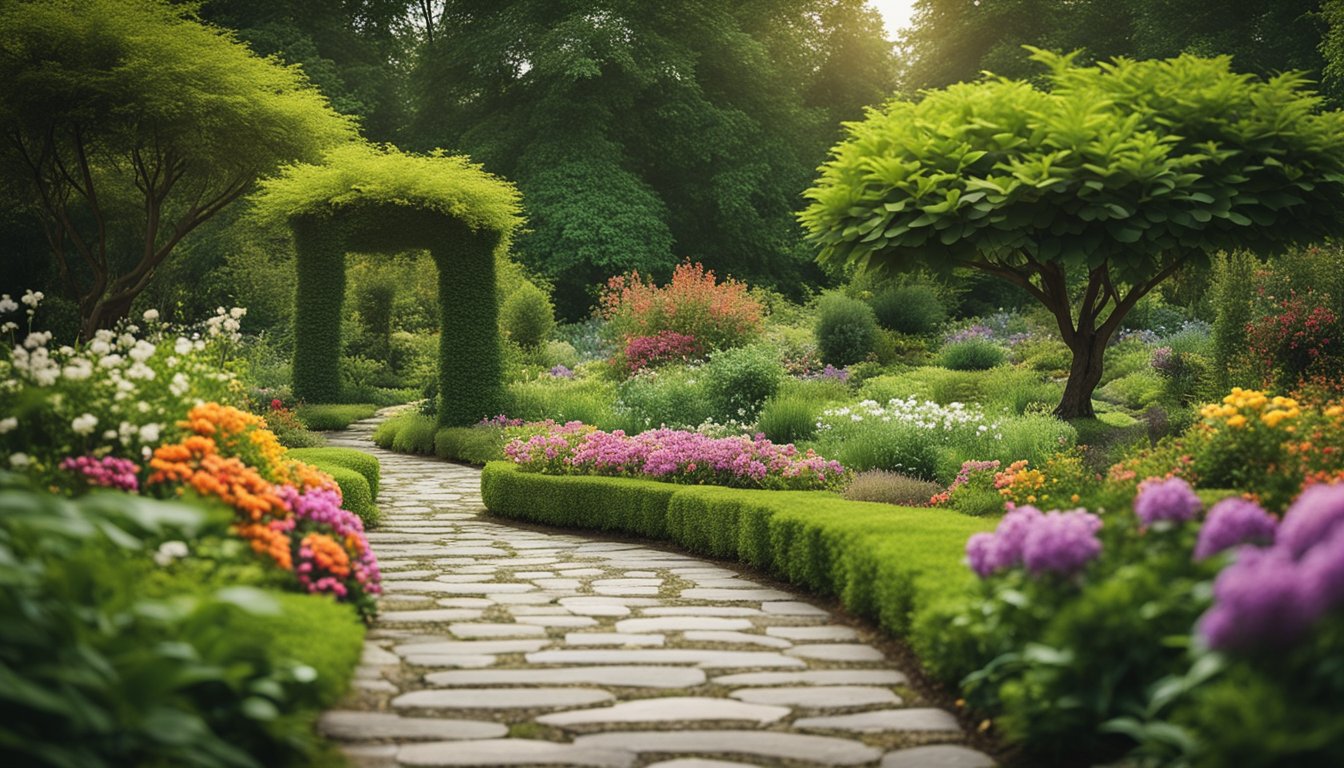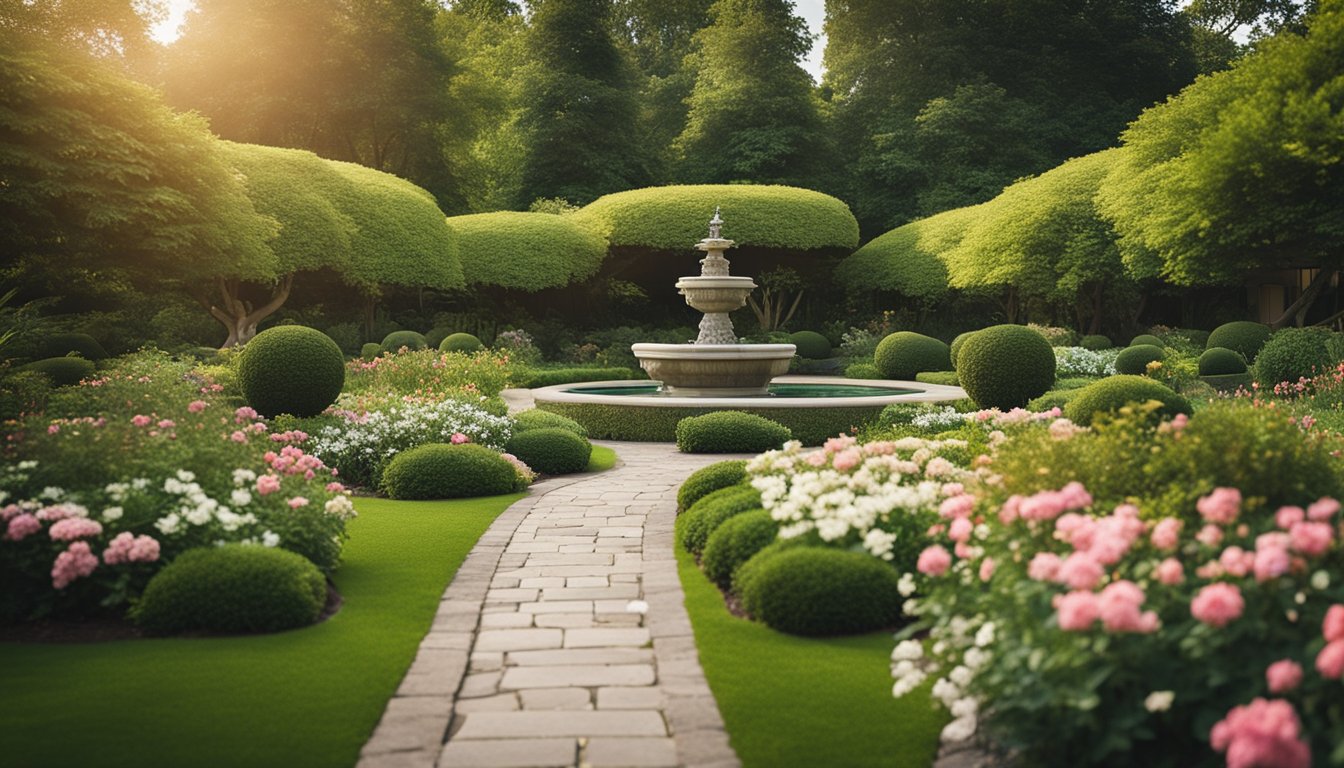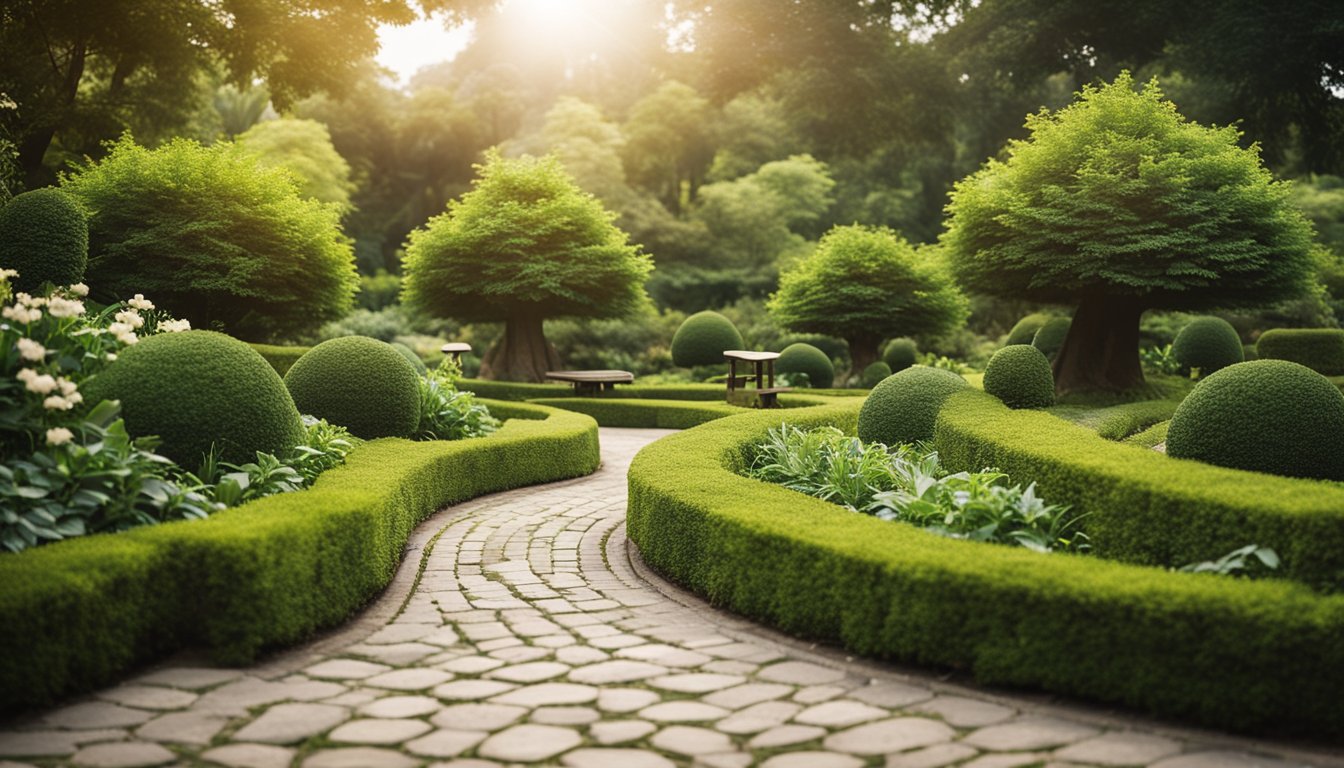Late updated: 18 Apr 2025 14:04
Written by: James Whitaker
Garden Meditation Space Design Tips: Creating a Serene Outdoor Retreat
Creating a meditation space in your garden offers a sanctuary where tranquillity meets nature. The key to designing a serene garden meditation space lies in carefully selecting natural elements and features that promote relaxation and introspection. Imagine stepping into a space where every element, from the gentle sound of water to the soft texture of pebbles underfoot, encourages mindfulness and peace.

Our journey begins with the focal point of your garden—a dedicated sitting area that invites you to pause and connect with your surroundings. By using natural materials like stones and incorporating soothing water features, the atmosphere of calm and peace can be truly enhanced. We've also found that a winding path can transform a simple stroll into a meditative experience.
It’s important to remember that each element you choose contributes to a harmonious environment. From strategic plant placement to the inclusion of light and sound, each decision shapes the overall mood. Tailoring your space to reflect personal preferences ensures that your meditation garden is not only aesthetically pleasing but also spiritually fulfilling.
Key Takeaways
- Incorporate natural elements for relaxation and peace.
- Create a focal point and harmonious environment.
- Personalise design elements to reflect preferences.
Essential Principles of Garden Meditation Space Design

Creating a meditation garden involves thoughtful design choices that foster tranquillity, simplicity, and balance. Central to this are the careful planning of the space, the selection of natural elements, and the seamless integration of aesthetics with functionality.
Planning and Site Selection
Identifying the right location is pivotal for enhancing the sense of peacefulness. We should look for areas that are naturally quiet and isolated. If possible, choose a site that naturally provides a feeling of separation from other outdoor spaces.
This can be facilitated using fencing or natural barriers like shrubs. Accessibility also plays a crucial part. Paths should be clearly defined to ensure easy navigation without disturbing the serenity. Consider using materials like gravel or stepping stones for their simplicity and aesthetic appeal.
Incorporating Natural Elements
Nature itself inspires serenity. Incorporating diverse natural elements can significantly enhance the meditative experience. We find water features like small fountains or ponds serve as focal points, offering soothing sounds that embody stillness and mindfulness.
Include a mix of plants, from mosses to aromatic herbs, to engage the senses. Japanese maples or bamboos provide year-round interest and a meditative ambience. Textures and colours in plants should be chosen to create harmony, promoting a healing and therapeutic garden environment.
Balancing Simplicity and Functionality
A minimalist approach ensures that the garden remains a space free of distractions, promoting inner peace. However, functionality shouldn't be sacrificed in a quest for minimalism. We recommend incorporating simple seating like stone benches or wooden chairs in tucked-away corners where one can sit undisturbed.
The design should support easy maintenance to retain functionality. Choose durable materials that age gracefully and keep the focus on reducing clutter. Mindfulness in design ensures that all elements serve a purpose, contributing to the garden's overall tranquillity and meditative efficacy.
Key Features and Design Elements for an Effective Meditation Garden
Creating a meditation garden involves thoughtful consideration of various features to enhance relaxation and mindfulness. Effective gardens balance elements like plant selection, water features, pathways, seating, and lighting to form spaces that invite contemplation and serenity.
Plant Selection and Greenery
Choosing the right plants is crucial for setting the tone of a meditation garden. We often favour aromatic herbs like lavender and jasmine, which offer soothing fragrances to calm the mind. Adding native plants not only supports local ecosystems but also reduces the need for extensive maintenance. Bamboo or bonsai can introduce elements of zen gardens, embracing simplicity and naturalness.
For textures and visual interest, blending assorted sizes and types of greenery provides contrast and depth. The aim is to achieve harmony and balance, reflecting principles of asymmetry (fukinsei) and naturalness (shinzen). This approach creates an inviting space where the plant life promotes a state of peace and reflection.
Water Features for Serenity
Installing a water feature can significantly enhance the serenity of a meditation garden. Options such as a small fountain, pond, or waterfall contribute to the experience by incorporating soothing sounds. These features create a sense of stillness (seijaku) and tranquillity, which is vital for meditation.
A reflecting pool can add a sense of magic and symbolism, encouraging introspection. The gentle movement and sound of water help to mask unwanted noise, making it easier to focus inwardly. Thoughtful placement, such as near seating areas, ensures that one can enjoy the calming effects during quiet reflection.
Pathways, Rocks, and Stepping Stones
Pathways play a crucial role in defining the flow and movement throughout the garden. Stepping stones, gravel, and rocks contribute to the aesthetics while providing practical walking routes. We often use natural stones to establish paths that appear as if part of the landscape's natural design.
Concrete pavers might be employed for durability and easy maintenance, while raked gravel or sand can symbolise traditional zen gardens. Incorporating asymmetry in pathway design adds a sense of mystery, inviting exploration without rigidity. Elements like large rocks often serve as focal points, blending functionality with the garden's beauty.
Seating, Lighting, and Focal Points
Seating is essential for any meditation garden, facilitating prolonged periods of focus and relaxation. We recommend installing benches or placing simple wooden chairs in shaded areas or spaces with a pleasing view. Pergolas or fences may offer additional privacy and enclosure, enhancing the overall tranquillity.
Lighting should be subtle and strategically placed to maintain the garden’s peaceful atmosphere during evening hours. Soft lights emphasise key features like pathways or focal points such as a beautiful sculpture or bird feeder. This balanced approach in seating and lighting provides an inviting space that encourages regular use and enjoyment throughout the day.
Frequently Asked Questions

Creating a meditation garden involves incorporating essential features and plant choices to foster tranquillity. It's also crucial to consider space optimisation, privacy, and integrating elements like water features and Feng Shui for enhanced serenity.
How can one maximise the use of a small space for creating a meditation garden?
In smaller spaces, prioritising vertical elements such as trellises with climbing plants helps maximise the area. Utilising multi-level designs can create distinct zones within limited confines.
What are the essential elements to include when designing a meditation garden?
Key elements include seating for comfort, sturdy pathways for accessibility, and natural boundaries like shrubs or hedges. Including textures, scents, and sounds can enhance the meditative experience.
What type of plants are recommended for cultivating a calming atmosphere in a meditation garden?
Lavender, chamomile, and jasmine are excellent choices for their soothing scents. Grasses like bamboo can offer gentle rustling sounds, while evergreens provide year-round greenery.
How can one incorporate water features into an outdoor meditation area?
Adding a small fountain or birdbath can introduce the calming sound of flowing water. Using ponds or reflective pools can also invite tranquillity and create a focal point in the garden.
What are some design strategies for maintaining privacy in an outdoor meditation space?
Strategic placement of tall plants, such as bamboo, or installing lattice screens can shield the space from view. Incorporating elements like pergolas can offer overhead privacy.
How can the principles of Feng Shui be applied to enhance the serenity of a meditation garden?
Arranging elements to encourage harmonious energy flow is vital. We can achieve this by balancing the five Feng Shui elements: wood, fire, earth, metal, and water, and ensuring pathways curve gently to allow chi energy to move naturally.
